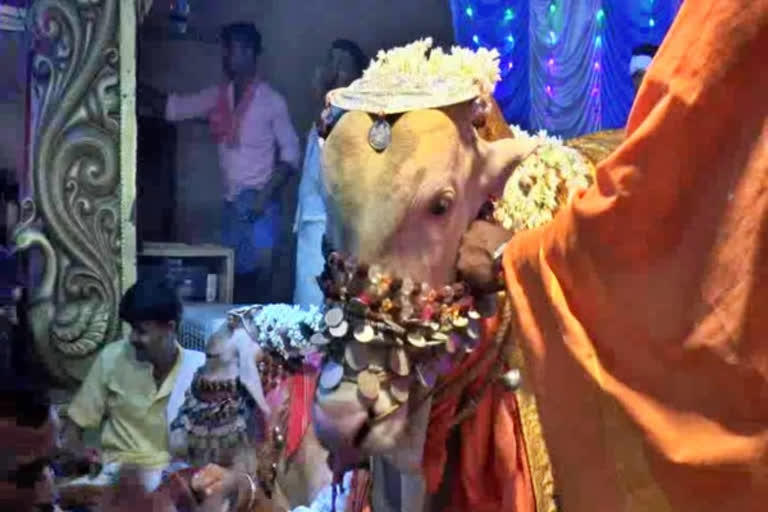Hyderabad (Telangana): Indian gods are often associated with animals. Most of the gods and goddesses have animals as their Bahan (Carriers) but the biggest irony is that these poor helpless creatures are often sacrificed to please their Lords. Not always of course. Here is a story of some temples and worship areas where these ‘God's own creations’ are given their due respect.
A visit to these temples will reveal that there a crocodile is not considered an apex predator but a friendly creature posing no harm to devotees and rats are not considered pests but are given offerings as to the devotees they are sacred, and scorpions don't sting rather stick to the palm of the children even.
One such instance of such a peaceful man-animal relationship can be seen in the Ananthapura Lake Temple in Kerala's Kasaragod where a "vegetarian" crocodile living in the pond in the temple calmly eats ‘rice nivedyam’ or offerings when called by the priest. The photos and videos of the gentle reptilian which is said to be 75 years old went viral on social media.
Locals said that the crocodile named Babiya enters the Sanctum Sanctorum of the temple only after it is closed. However, devotees did not take it seriously until photos of the crocodile surfaced. They consider its appearance divine and priests chant prayers when it appears as it is believed that the witnessing of the crocodile named Babiya brings blessings and results in good luck.
However, such unique love and reverence for animals in temples are not confined to reptiles only but they are spread across Arachnida like scorpions and even mammals like rats and bulls. There is one Kondamai temple in the middle of the hills that surrounds the village called Kandakur in Andhra Pradesh. Interestingly in the temple there is a rare scorpion statue. By the grace of this goddess, scorpions are seen here in abundance on Nagara Panchami day. Children and devotees play with scorpions on the Panchami day of Shravan month in the hilly area around. The villagers say that no one gets stung by worshiping the scorpion idol in the temple.
The Karni Mata temple located in the Deshnoke town of Rajasthan's Bikaner is a place where rats are not considered as disease-spreading pests but are revered. Called "kabbas", about 20,000 black rats reside in the temple, where visitors, often travelling great distances, offer prayers to them to get their wishes fulfilled.
